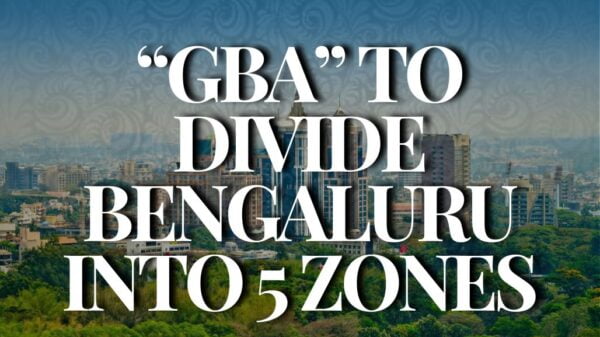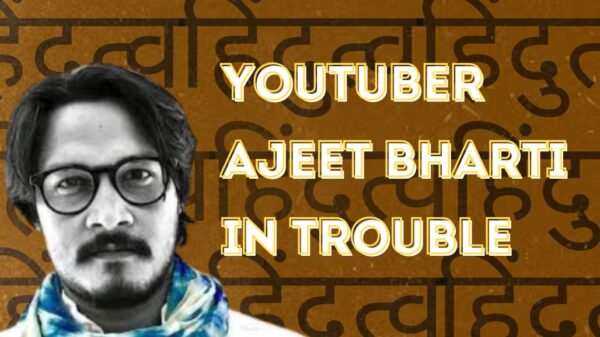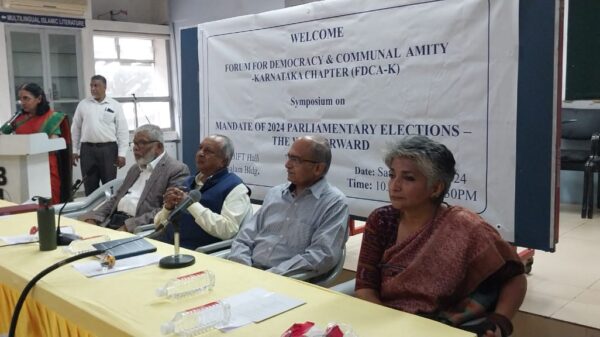In order to combat the simian threat after the usage of langurs was outlawed in 2012, monkey whisperer Gul Khan and his extended family improved their techniques. Gul Khan (41) carries a unique business card. It reads “Gul Khan, seasoned monkey chaser” and features images of three rhesus monkeys. The top left corner has a phone number, and the bottom has a note that reads, “Contact to chase monkeys away.”
Khan has been a paid monkey catcher and monkey whisperer in New Delhi for over three decades. In the enterprise, they have elevated to the level of art. He has also trained his three brothers and approximately a dozen cousins. His unique talent makes him stand out: his voice alone can scare monkeys away.
Historically, the city frequently used langurs to keep its natural enemies, rhesus monkeys, out of homes and public locations. Khan utilised them at one point as well. Nevertheless, the Delhi government outlawed the practice in 2012 in response to reports of animal abuse and Maneka Gandhi’s efforts as the Union Minister for Women and Child Development.

Mr Khan Working As The Monkey Whisperer
Image Source: The Hindu
Although Mr Khan and others voiced their opinion against this, they were not heeded. After the prohibition, he and his siblings and cousins were unexpectedly out of work. Driving away monkeys without the langurs was challenging, so they had to be set free. He said, “The authorities asked us to hand over our langurs to them so they could put them in a zoo. Instead, we decided to let them free in a nearby forest.”
He later came up with the idea to chase away monkeys by becoming a monkey whisperer. He said, “We have grown up with monkeys and langurs and know their nature. We trained ourselves to make the sounds of a langur. Slowly, we succeeded in chasing away monkeys without our langurs,”. Soon, the monkey-chasing work picked up. Khan uses loud, piercing noises to frighten the monkeys away. He cries, imitating a langur, “Triooo! Oooo!” The monkeys quickly run away.

Mr Khan Chasing Away Monkeys
Image Source: The Hindu
Khan travels from his house in Khajuri Khas every day in search of areas with a monkey problem and provides a remedy. In New Delhi’s most important buildings, such as the Prime Minister’s Office, the Ministries of Finance, Commerce, and External Affairs, and the Rashtrapati Bhavan, men from his extended family are currently working as monkey chasers.
In the Lutyens district, monkeys have terrorised the PMO, destroyed records at the Home Ministry, and wreaked havoc at former Vice President Venkaiah Naidu’s official residence. The topic was included in the Aam Aadmi Party platform before the 2022 election for the Municipal Corporation of Delhi.
His cousin, Abdul Khan, says, “There isn’t too much money in this. It’s an unusual career for sure, but there is respect.” They are only compensated at the daily wage rate the Delhi government sets, which is presently Rs. 643 for each eight-hour shift.
Due to deforestation, Rhesus monkeys have entered cities searching for food and water. There are thought to be nearly 20,000 monkeys in the city. However, there is no official estimate.
The monkeys are infamous for stealing food, attacking humans, and destroying property; as a result, considerable disruptions in life have occurred, occasionally leading to severe injuries. Sterilisation, relocation, and killing are only a few of the methods the government has tried in vain to control the monkey population.
How did fate change for the Monkey Whisperer?
In the early 2000s, Gul Khan met Rajinder, a policeman who believed his family’s langur might answer the monkey problem. He says, “He told me that the officials in the External Affairs Ministry are fed up with monkeys. The next day, I took my langur to the Ministry and managed to shoo the monkeys away immediately. Everyone was impressed, and I was asked to start working there as a monkey chaser.”

Image Source: The Hindu
He says that the job as a monkey whisperer had brought respect in the community, “When my father used to do street shows, anyone could talk down to him or ask him to go away. But here, they need us. We are no longer chased away as unwanted people. It feels good to serve those who are serving the country and working towards the development of the nation,” he said.
When he received his first monkey-chasing assignment as a monkey whisperer, Khan looked through newspapers for details on the monkey menace. He said, “Once, I read a newspaper clipping about Kasturba Gandhi Hospital being under the grip of naughty monkeys,” he said. “Often, patients were bitten by the monkeys. Even the doctors were having a tough time. I went there and offered my services. They readily accepted.”

A Monkey Eating An Ice Cream
Image Source: The Hindu
After nearly ten years of chasing monkeys in the External Affairs Ministry, he began taking on other jobs as a monkey whisperer. He now also performs contract work. He said, “I could work at multiple places, per the need. It meant more money so that I could educate my kids.” The income varied, sometimes Rs.100 a day, while on others, even Rs. 1,000 a day.
How does the monkey whisperer do his art?
As a monkey whisperer, Khan understands monkeys like no one else does. “Just like humans, the monkeys also have a pradhan (head),” he said. “They also have informers. They recognise us monkey chasers. If we skip one day, one of the monkeys will inform the other monkeys and all of them would just come out to attack. The news travels fast with them.” Further, he said that monkeys were very smart animals who could recognise monkey chasers by their body language and smell.
He adds, “The trick is to create fear in the monkeys and not hurt them, scare them enough so they don’t cause destruction or panic.”

A Langur Resting
Image Source: The Hindu
Despite the risks involved, Khan knows the monkeys will never harm him. He smiled, “Monkeys, by their very nature are clumsy animals. The only time they remain silent is when they are sleeping. On the other hand, langurs are calm and reserved. They don’t like much noise and don’t create any panic.”
Khan and his family left the Paharganj slums, where they had resided for several generations, in 2009. He eventually earned enough money to purchase a tiny plot of land in the Khajuri Khas neighbourhood to erect a small house. He wishes to educate his children well while keeping the tradition alive.












































































